Sushi: perhaps the most famous offering that Japan has given to the international culinary scene. But how do you eat it? Do you use chopsticks or your hands? The answer is just as complex as sushi and how to eat sushi.
Like many great foods, sushi’s simplistic style doesn’t show complexity. It is more than just pressing raw fish onto rice and calling it a day. The same goes for sushi etiquette, a subset of Japanese table manners in general. Let’s learn all about it.
How to Eat Sushi Based on the Style
Nigirizushi (Hand-pressed sushi)
Nigirizushi (or nigiri sushi) is one of two presentations that most people picture when they think of sushi. The chef presses a small amount of sushi rice (shari) into an oblong shape in their palm before pressing a topping (neta) over it with two fingers.
The chef might also place a dab of wasabi between the topping and rice or brush a secret sauce blend over the topping if required. Other toppings might have a thin seaweed (nori) strip to hold the rice and topping together.
Most chefs recommend eating nigirizushi with your hands, especially if you’re at a sushi restaurant. This is because the rice in nigirizushi is looser than usual and might break if you hold them with chopsticks too tightly. Kaitenzushi (conveyor belt sushi) and all-you-can-eat restaurants may use sushi rice machines to pack the rice more firmly and allow customers to use chopsticks instead.
Want to make sure you don’t offend at kaitenzushi? Learn all about Japanese conveyor belt sushi etiquette here!

Do you eat sushi with your hands or chopsticks?
When it comes to enjoying sushi, the age-old question of whether to eat it with your hands or chopsticks often arises. There’s no strict rule dictating the “correct” way to consume this popular Japanese delicacy. Traditionally, sushi is eaten with your hands, allowing you to fully experience the texture and flavors of the sushi rice and fresh fish.
However, chopsticks are also widely accepted and can provide a more precise and controlled dining experience. Ultimately, the choice is yours and depends on your personal preference and comfort level. So go ahead, and embrace the deliciousness of sushi, whether you opt for the tactile connection of your hands or the precision of chopsticks.
How do I eat nigirizushi?
When eating nigirizushi, please take it in your hand and flip it over (fish side down) before dipping the fish in the soy sauce (lightly) and placing it into your mouth. The fish side should contact your tongue first with the rice completing the bite. It would be best if you also ate it in a single bite. Also, the soy sauce shouldn’t touch the rice as this will break down its integrity, causing it to break apart.
Nigirizushi has spawned several subtypes throughout its history, like:
- Gunkanmaki (warship roll) requires a wide strip of seaweed wrapped around an oval clump of rice to form a perimeter so soft, loose, or finely chopped toppings can be held inside. The name of this style comes from its battleship-like appearance. These can be eaten with hands or chopsticks.
- Temarizushi (ball sushi) – this style of sushi is made using plastic wrap to form the rice and fish into a round shape, giving it its name. These are usually eaten with chopsticks.
Want to experience the flavors of Japan right in your home? Try out Sakuraco! We can’t send sushi, but Sakuraco will send you delicious, locally-sourced traditional Japanese snacks, sweets, teas, and even kitchenware, so you can experience Japan wherever you are!
Makizushi (Sushi rolls)
This is another style that people picture when they think of sushi. When making makizushi, one typically layers a sheet of nori at the bottom, rice in the middle, and the filling on top. A flexible bamboo mat is then used to form the sushi.
When eating makizushi, individuals typically use chopsticks. When enjoying makizushi, it is advisable to consume it promptly to appreciate the crispy texture of the seaweed fully. People eat makizushi as the final course.
Like nigirizushi, makizushi offers a wide range of sushi styles, encompassing various subtypes, including but not limited to.:
- Futomaki (thick rolls) are usually larger than most sushi rolls and consist of multiple fillings that complement each other when eaten together.
- Hosomaki (thin rolls) – these rolls consist of one filling and are usually served in six to eight portions. Popular fillings include cucumber, tuna, and negitoromaki, which uses scallions and chopped tuna.
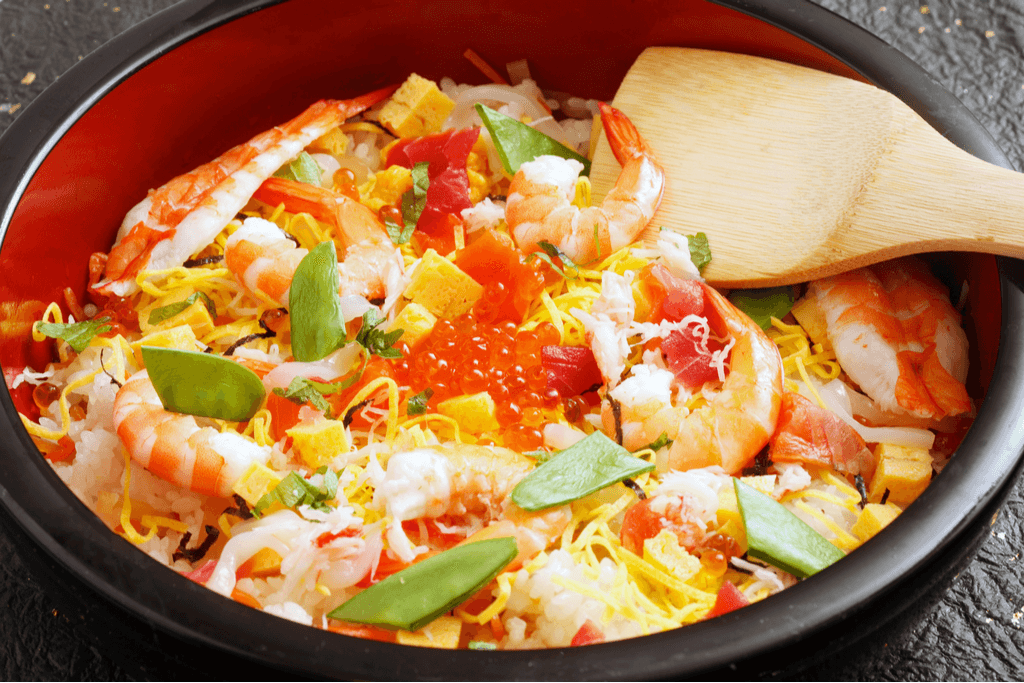
Temaki (Hand rolls)
Another subtype of makizushi, this style looks like an ice cream cone. In this sushi style, the nori wraps around the rice and fillings, which spill out from the open end of the cone. As the name suggests, you eat this sushi with your hands, ideally as soon as possible.
Chirashizushi (Scattered sushi)
In this style, the chef scoops vinegared rice into a bowl and serve it with fish and vegetable toppings. The vinegared rice makes this dish different from kaisendon (rice bowl topped with raw fish). This dish has different regional styles and the placement and presentation of the fish change according to the region. Despite the main ingredient being loose rice in a bowl, most people eat chirashizushi with chopsticks.
Oshizushi (Pressed sushi)
Also known as hakosushi (boxed sushi), this style originates from the Kansai region and is a favorite in Osaka. Using a plastic or wooden mold, the sushi chef places the toppings at the bottom of the mold and layers rice on top before pressing down with the lid to make a block. The block is then cut into bite-sized pieces and served to customers. This style of sushi can be eaten with your hands or chopsticks.
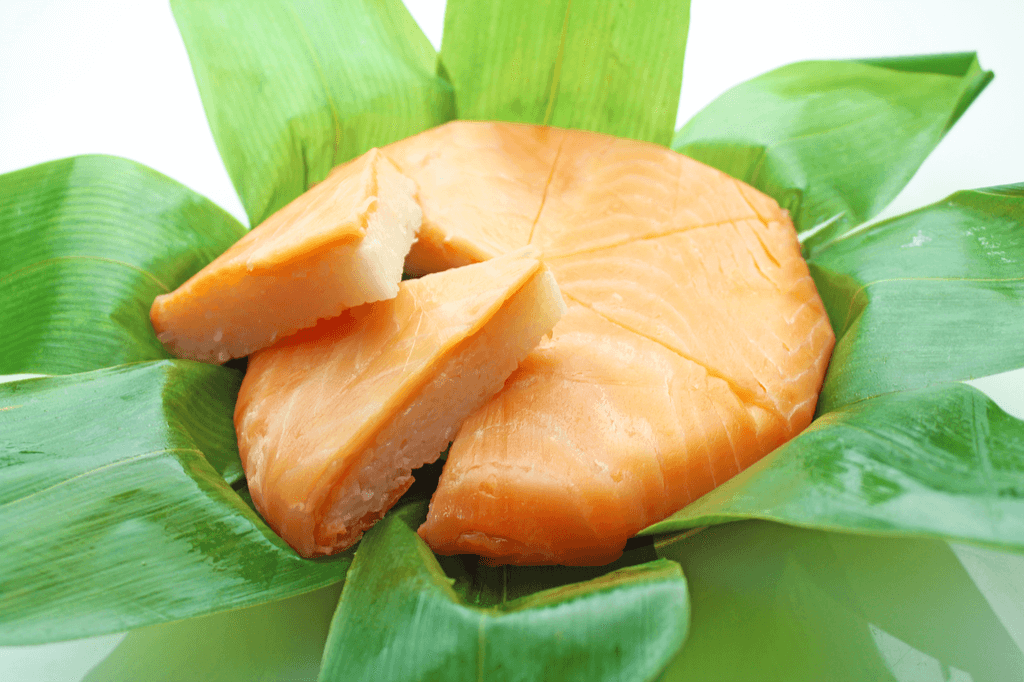
Is there a specific way to eat sushi?
Not exactly. Everyone is free to eat their sushi in whatever way they please. Still, sushi chefs will usually serve you in this order: fish with a light flavor, fish with a heavier flavor, fatty fish, sweeter options, tamagoyaki (sweet grilled egg), nigirizushi, and makizushi.
Generally, you are ordering omakase (chef’s choice), and the chef will provide you with his course menu for the day. The menu might differ each time you visit due to availability and market prices. Eating the sushi as soon as the chef places it in front of you is best.
Am I supposed to eat wasabi? (Japanese Horseradish)?
If you’re eating at a restaurant or standing bar, the chef will place the perfect amount of wasabi inside your sushi. If you don’t want wasabi, you can tell the chef that you’d like your sushi without wasabi.
“What if I want more?” you ask.
Use a small amount of wasabi on top of the fish in your sushi. However, mixing a lot of wasabi with soy sauce to dip sushi breaks etiquette and disappoints the sushi chef.
Am I also supposed to eat ginger?
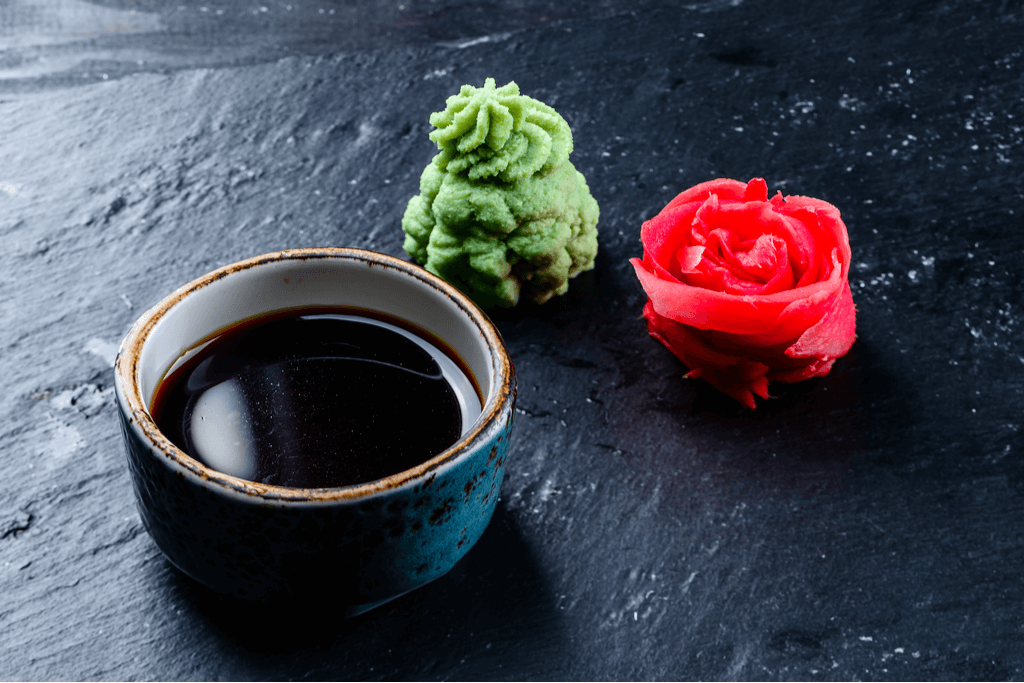
Pickled ginger serves as a palate cleanser, refreshing your taste buds and enabling you to fully appreciate the delicate flavors of the sushi prepared by the chef. Eating a small piece of ginger between each piece of sushi is customary to cleanse the palate and enhance the dining experience. The ginger’s tangy and slightly spicy taste helps neutralize lingering flavors, ensuring you can savor each sushi piece’s unique nuances.
What do they call soy sauce in sushi restaurants?
Sushi restaurants use “murasaki” (purple) to refer to soy sauce. This term originates in the old imperial court, usually describing something resembling soy sauce’s color. The connection with purple may also stem from soy sauce being a luxury item, as expensive objects often used purple cloth as wrapping.
Think of it as code for the trade. Customers usually refer to soy sauce by the typical Japanese word, “shoyu.” Other codewords include “namida” (tears), which means ‘wasabi’ among sushi chefs.
What About Uramaki?
Uramaki, or inside-out rolls, are more common outside of Japan. The sushi rolls have rice on the outside and the nori wrapped around the filling directly. This is because some people might find the sight of seaweed unappealing. So, the idea to hide nori underneath the rice was born. Famous sushi rolls include California, Philadelphia, and other regional variations.
Have you mastered how to eat sushi? Which style of sushi do you prefer? Tell us in the comments below!

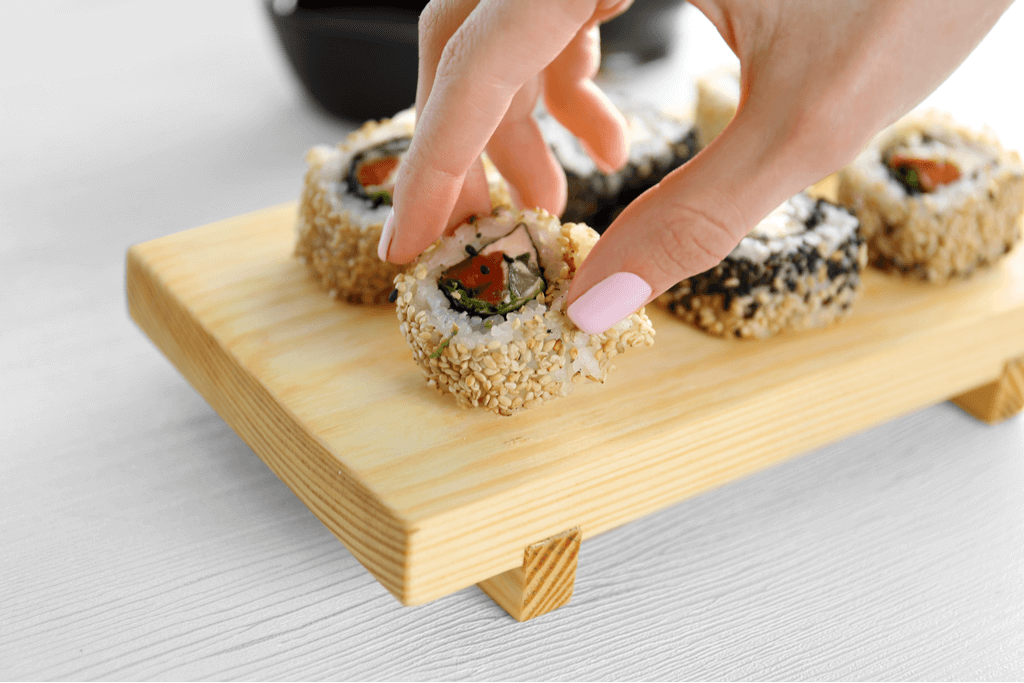


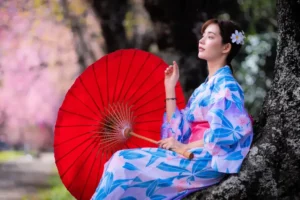






One Response
Sushi rolls are my favorite, but I want to try the “pressed” sushi, it looks interesting. But on all of them, you can keep the wasabi – way too strong for my palate.